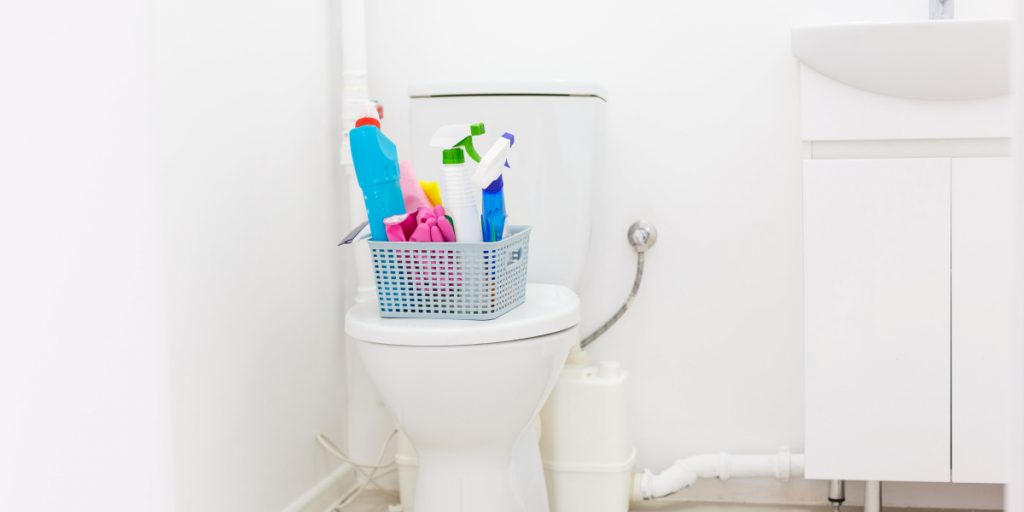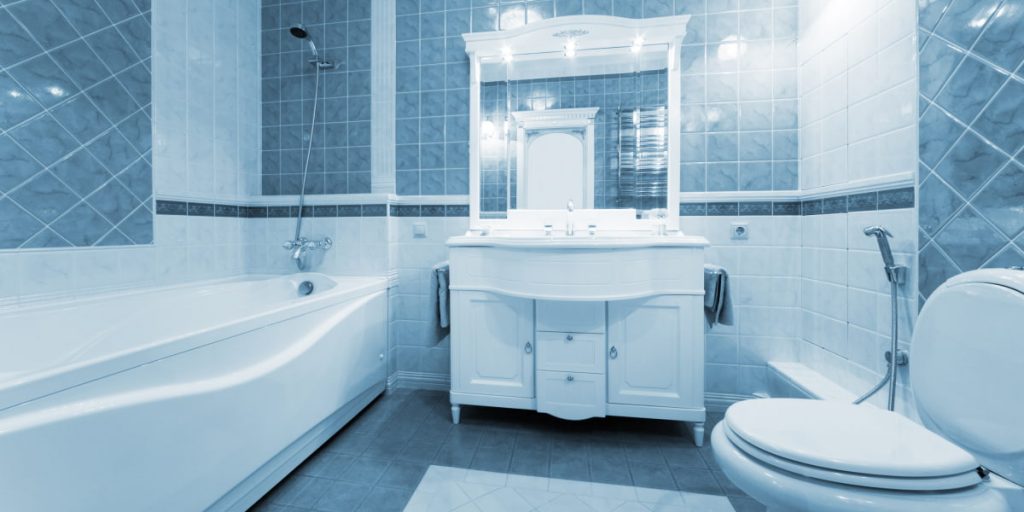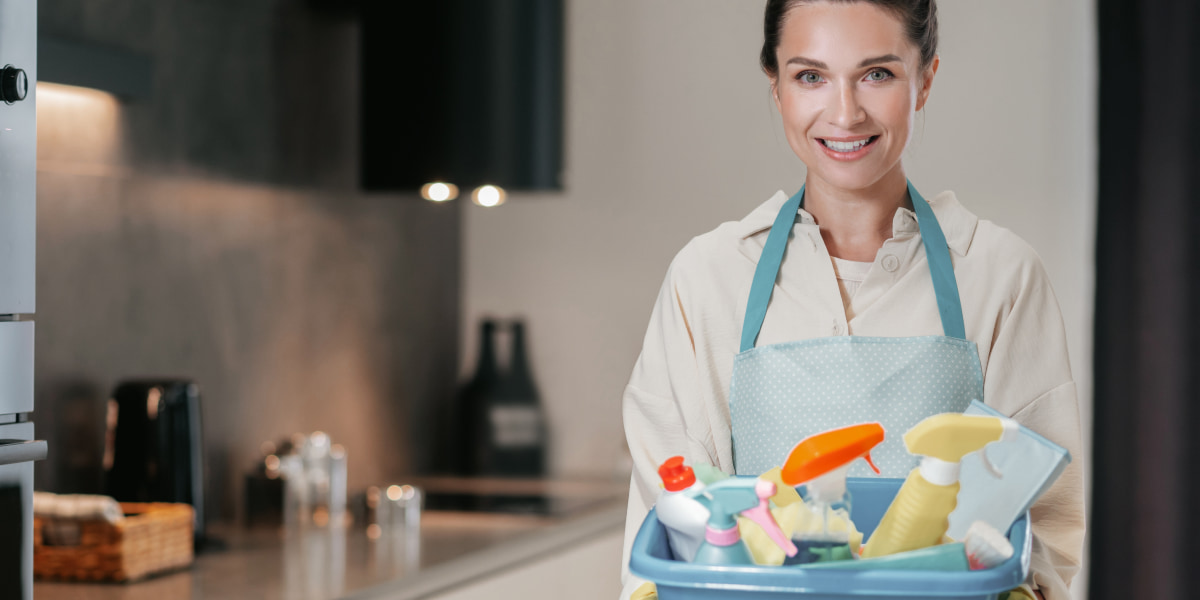Published on September 2nd, 2022
Last updated on February 6th, 2023
How To Get Rid Of Toilet Odor? 3 Hacks To Freshen Up Your Bathroom

The problem of unpleasant odors in the bathroom can occur to anyone. The toilet bowl and cistern may sparkle with cleanliness, but the offensive smell still spoils the impression of the bathroom. The functionality of sanitary facilities, high humidity, and the proximity of sewage pipes mean that even the cleanest toilets can have an odor issue.
The fumes from the toilet quickly penetrate other rooms, creating an uncomfortable and disgusting environment throughout the house. It is important to understand that sewer stench is not just a psychological discomfort. Hearing the smell from the bathroom means that pathogens are in the air, which can provoke various gastrointestinal diseases, allergies, and skin rashes.
What to do if general cleaning and air fresheners do not bring the desired results? The answer is simple – you need to look for unobvious sources of extraneous “flavors”. Removing them will help bring back the freshness and cleanliness of your bathroom.
What Are The Causes Of Bad Bathroom Odors?

To better understand how the air from the sewer system enters the room, you should have at least a basic understanding of the drainage system. A riser pipe drains wastewater from all home flats, appliances, pipes, and sanitary fittings with traps. The siphon should prevent air from entering the bathroom from the sewer system. There is water in the bends of the appliance at all times. If the water from the odor trap partially or completely disappears, this causes an odor.
There are several main reasons for an unpleasant smell in the bathroom:
- Mistakes in the design or installation of the drainage system. If the system is installed incorrectly, a constant stench is guaranteed. Air fresheners and household chemicals will not solve the problem. In such a case, the system must be reworked, and qualified craftsmen should do this;
- Incorrect angle of slope of sewer pipes. If the angle is too small, sewage will stagnate in the system and cause a foul odor. The solution to this problem is costly: you must rebuild the pipes. Half measures can be achieved by changing the gaskets and carefully sealing the joints;
- The siphon is not working properly. If the pressure in the drainage system is higher than the atmospheric one, air can escape into the room through the trap in the form of bubbles;
- Leaks. Water from the sewer system can seep through leaking joints in the pipes. If the leak is big, it is easy to spot puddles on the floor;
- Poor ventilation. A ventilation system must be installed to prevent air stagnation. It can be natural or forced ventilation;
- A blockage in a pipe. The most common cause of bathroom drain odors is blockage. Dirt particles, debris, sand, and hair constantly get down the drain causing drains.
3 Ways To Remove Unpleasant Bathroom Smell
The first step is to find out what caused the problem. Check the ventilation and drainage systems and pipe joints one by one.
There are two ways to ensure the ventilation system has a good draft:
- A piece of paper is placed against the grille. If it sticks, everything is working fine;
- A lighted match or lighter is held up to the vent. The flame should deflect. If it doesn’t, you need to take care of the ventilation.
The next step is to check that the sink and bathtub are working. Open the taps to full power and watch how fast the water flows out of the drains. It may be a sign of a blockage if it’s slower than usual.
If the water drains normally, but the smell from the bathroom does not go away, it makes sense to flush the drains with boiling water. It is more preventive but helps clean and disinfect the pipe walls and kill bacteria.
1. Improving Ventilation Draft

A natural draft can become less effective for several reasons:
- Clogging of the ventilation shaft;
- Replacement of the bathroom door with a thicker one;
- Strong forced air intake from neighbors (relevant in apartment buildings).
Way 1: For natural reasons, ventilation is often worse in the summer heat than in winter. Hot outside air prevents the intake of cold air from cooler rooms, and an airlock occurs. You can fix it by leaving the bathroom door slightly ajar in summer to prevent the smell from appearing.
Way 2: Remove the ventilation grille, take a torch and inspect the ventilation shaft as far as it is accessible. Sometimes the clog is very close to the vent and can be reached with your hands, a hook, or a small scoop.
Way 3: If a closed door or high threshold causes the problem, you can ensure additional airflow from under the door leaf. Cut the lower part of the leaf so that the door does not lie tightly against the frame, and a small gap is left.
Way 4: An excellent option is to install a fan in the exhaust port. Install either an axial fan or a ducted model with a non-return valve to prevent air from the sump from flowing into the room.
2. Using Baking Soda And Citric Acid

Bathroom odors can be eliminated by using local remedies. You can use baking soda and vinegar or citric acid. These substances break up small blockages, remove deposits from the walls of the pipes and disinfect.
Here are a few examples of how they can be used effectively:
Way 1: Soda. Pour half a packet of baking soda down the bathtub drain or sink drain and leave it for 20 minutes. After that, the drain is flushed with plenty of hot water.
Way 2: Soda with vinegar. Pour baking soda into the drain, add a glass of vinegar, and close the drain with a cork. Rinse it after 20 minutes.
Way 3: Citric acid. When combined with boiling water, citric acid cleans the pipes, and baking soda and vinegar. The drains should be flushed when the acid stops fizzing and foaming.
Instead of homemade remedies, you can use ready-made chemical pipe-cleaning compounds to remove bathroom odors. They are more effective but not safe, so you should wear gloves and take care of your skin, eyes, and respiratory organs when using them.
3. Sealing Sewer Joints For Removing Bathroom Smell

Fuming is the easiest way to seal joints, but a more reliable way is with a special sealant.
Sanitary sealing compounds come in several varieties:
Way 1: Silicone. These are expensive sealants, but they have good adhesion and elasticity. Compounds retain their properties at high and low temperatures and do not shrink.
Way 2: Acrylic. The main advantage of acrylic sealants is a long service life, good water-repellent properties, and resistance to temperature changes. The disadvantage is low elasticity.
Way 3: Silicone-acrylic. It is an optimal choice. Sealants can seal seams, repair small cracks and chips, and glue surfaces.
Way 4: Polyurethane. Paint can be applied over polyurethane compounds. It is a good option if the leak is in a visible spot and needs to be covered up. The disadvantage is a strong toxic smell that will disappear once the sealant has been cured.
Clean, dry and degrease the surfaces well before starting work. Apply the sealant to the joint in a circular pattern. The line must be continuous. A soft spatula can be used for easy application and leveling.
Bottom Line
Smells play an important role in our lives. Even the impression that a house makes on people is called its atmosphere. Housewives do their best to make it pleasant: clean, take care of airing, and use air fresheners. A nice smell in the bathroom is as important as the smell in the whole house.
If there are sewage odors in the bathroom, it quickly spreads around the house and makes life miserable. This article has looked at ways of eliminating unpleasant bathroom odors. The most significant thing is to keep your hands up and do thorough research. If none of these methods work for you, you can always use the help of professionals.
FAQ
How Can You Prevent Unpleasant Smelling In The Bathroom?
Remember to ventilate the bathroom after use. Install a good towel rail, preferably an electric one. And once the humidity level is back to normal, clean the room of any traces of fungus or mold to eliminate the damp smell.
Are Bathroom Odors Dangerous?
The air from the sewer system is ‘scented’ with ammonia and hydrogen sulfide. It also includes methane, which has no detectable odor. Volatile gases affect the human nervous system. Unreasonable anxiety, nervousness, and irritability may occur.





